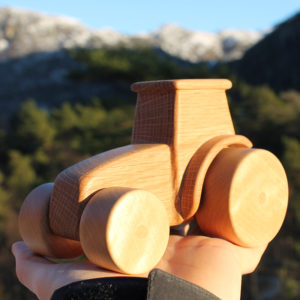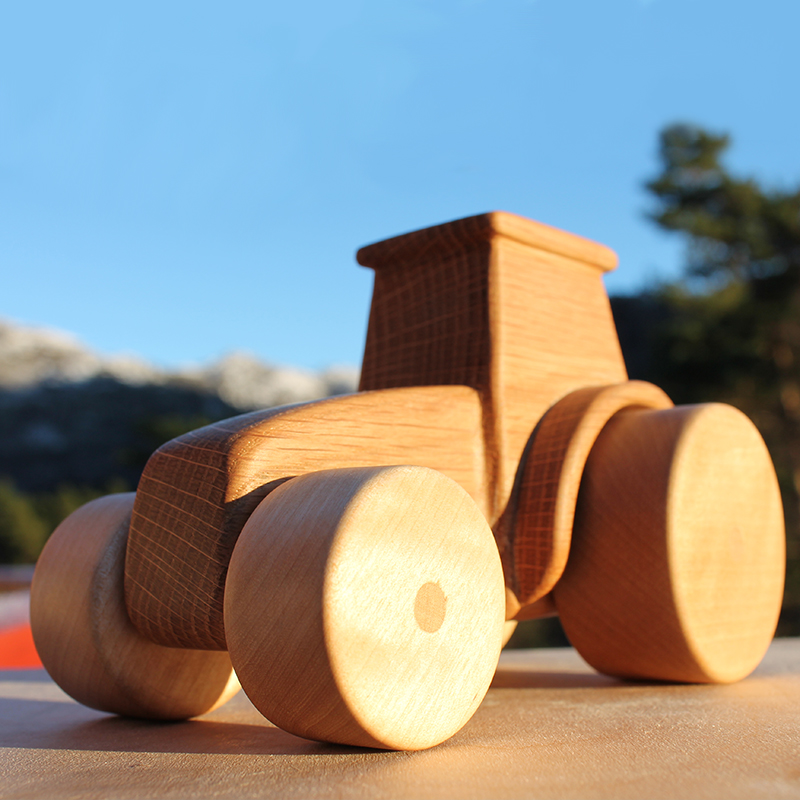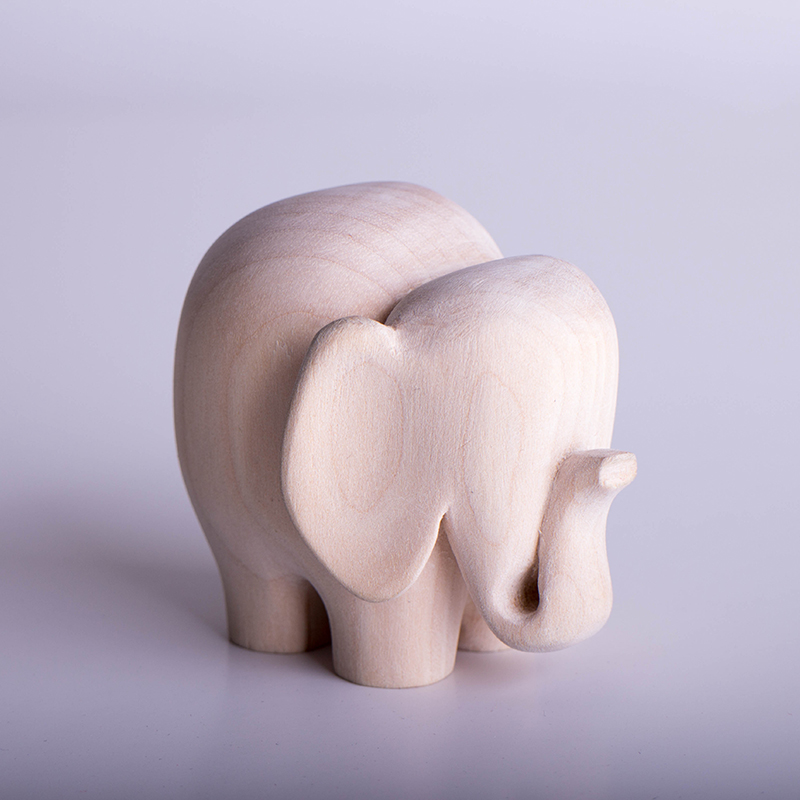When my best friend from my childhood was having his first child, I had to make a gift for his little family. I wanted it to be an heirloom-type gift that could function as a toy when the child was at that age, and as a decorative object when he becomes too old for it.
Since this little child is a boy, and since his father is a proud farmer, I thought that a tractor would be a good gift. It would have a nice function as a gift (rolling it around), and work well as a decorative, relevant object in the living room.
Since the name of the place where my friend live has something to do with both birch and oak, the material choice was clear.
So, after doing some research on what my friends favourite tractor brand is, I sat out designing the toy. I wanted it to not be too realistic, but at the same time not too childish. So simple shapes with some details would be the goal. I also had to consider the robustness of the thing since it would probably be banged around a lot. I did this to a large extent, but found that I still had to have the somewhat fragile wheel well to make it look good.
My design process varies a lot. But over the years I have built up an intuition of what works and what doesn’t, and thus I design a lot in my head, and just make some crow scratch drawings to record some of the thoughts for myself. I don’t think anyone else would get too much out of these drawings.
The building process was mostly just cutting the pieces out with a bandsaw, and then work them by hand with a chisel, files and sandpaper. Even though the process is simple it takes a lot of time and patience. But it is really rewarding when it all comes together in the end.
Order of operations is an important thing when doing a project like this (and in general) and it is a good practice to go through the building process in your head before actually starting to cut material. There are often problems that occur, or things that dictate which order it should be done in. For example, in a project like this, one wants the axels and the wheels to be square to the body. On the final shape of the main body, the sides are not parallel, and the wheel wells stick out on each side, making it hard to drill a perpendicular hole. Therefore, drilling the holes in the body for the axels were one of the first things I did.
Being a bit short on time on this project, I did not get to finish it at the workshop at uni, so I had to do the last parts in my workshop in the countryside. Not having all the materials ready from the start (which is recommended that you do), I had not thought about the dowel material for the axels, but I had estimated suitable a size for them (using joining dowels as placeholders), and was not worried too much. My solution to the problem was to make a dowel jig out of a steel plate and a drill press (I thought why not learn to do this as well?). This worked okay, and I got some usable results, but I felt it could be done better. So, after spending a day on trying to make perfect dowels, I realized that my focus was all wrong. I was running out of time, and I should rather focus on finishing the tractor.
With me only using my homestead workshop around three times a year, I lose track of my inventory there, but when I just sat down and had a good look around in the archive in my head, I found a vague notion that I, some years ago, while ordering some pine dowels for a project, threw in a couple of birch ones for good measure. And sure enough when I looked in the cardboard tube where I kept the pine dowels, there were a couple of birch ones. They even had the same diameter as the holes I had drilled. So, either I’m just really lucky, or my subconscious is doing a lot of the work for me.
The tractor turned out well, and the entire little family really liked it. It is always so nice to see that what you do matters to the people you love.
I look forward to making more toys for this little boy. I already have some vague thoughts for what it should be, so I just have to find time for it.

Tractor made in white oak and birch, finished with Osmo harwax oil.
2016
©Sigve Astrup Lien



